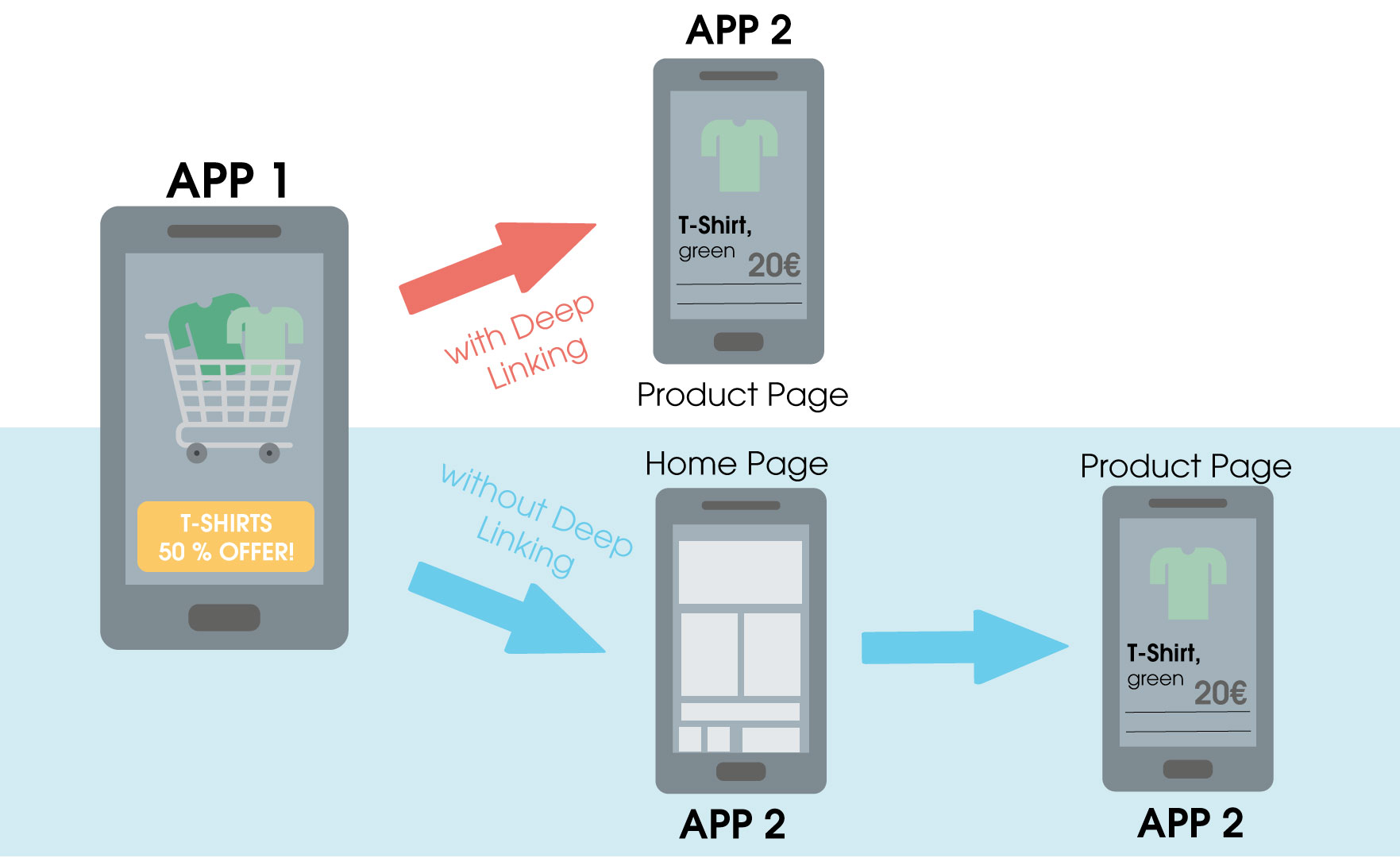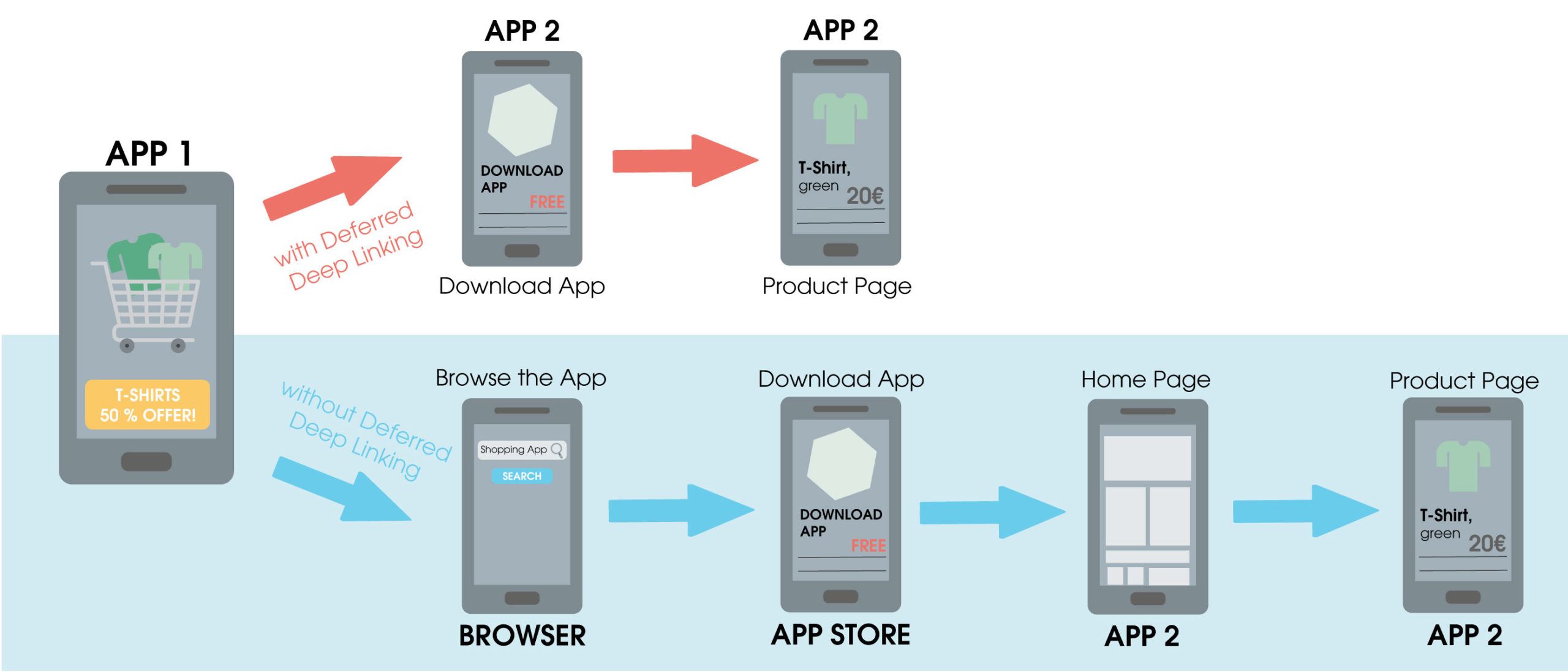Deep Hot Link: The Ultimate Guide To Understanding And Leveraging This Powerful SEO Strategy
Deep hot linking is a term that's been buzzing around the digital marketing world, and if you're not familiar with it yet, now's the perfect time to dive in. Think of it as a hidden gem in the world of search engine optimization (SEO) that can skyrocket your website's visibility. But what exactly is deep hot linking, and why should you care? Well, buckle up because we're about to break it down in a way that'll make you an expert in no time.
Imagine this: you're scrolling through your favorite website, and suddenly you stumble upon a link that takes you straight to the heart of the content you're looking for. That's deep hot linking in action. It's all about directing users to specific, valuable pages within a website rather than just the homepage. This strategy not only enhances user experience but also boosts your SEO game in ways you might not have imagined.
Now, before we dive deeper, let's set the stage. Deep hot linking isn't just another buzzword; it's a powerful tool that can transform how your website interacts with search engines and users alike. Whether you're a seasoned SEO pro or just starting out, understanding this concept is crucial for anyone looking to thrive in the digital landscape. So, let's get to it and uncover the secrets behind deep hot linking.
What Exactly Is Deep Hot Linking?
Alright, let's get into the nitty-gritty. Deep hot linking refers to the practice of linking directly to specific, inner pages of a website rather than the homepage. This is a game-changer because it allows users and search engines to access valuable content more efficiently. Think of it like giving someone the exact address to a hidden treasure instead of just pointing them to the general neighborhood.
Here's the deal: when you link to a homepage, you're essentially asking users to navigate through your site to find what they're looking for. But with deep hot linking, you're cutting out the middleman and taking them straight to the good stuff. This not only improves user experience but also signals to search engines that your inner pages are valuable and worth ranking higher.
Let's break it down even further:
- Gay Dating Mehr Was Sie Ber Blowers Co Wissen Sollten
- Dienstag Gre Sprche Mehr So Wird Dein Tag Perfekt
- Direct Access: Users land directly on the page they're searching for, reducing bounce rates.
- SEO Boost: Search engines recognize the value of your inner pages, potentially improving your rankings.
- User Engagement: By providing exactly what users are looking for, you increase the chances of them staying on your site longer.
In a world where attention spans are shorter than ever, deep hot linking is your secret weapon for capturing and retaining user interest.
Why Deep Hot Linking Matters for SEO
Now that we know what deep hot linking is, let's talk about why it's such a big deal for SEO. In the eyes of search engines like Google, every link matters. When you link to a specific page within your site, you're telling Google (and other search engines) that this page is important and worth ranking higher in search results. This is where the magic happens.
Here's how deep hot linking can supercharge your SEO efforts:
- Improved Crawlability: Search engine bots can more easily find and index your inner pages, increasing their visibility.
- Increased Authority: The more links pointing to a specific page, the more authoritative it becomes in the eyes of search engines.
- Enhanced User Experience: When users can quickly find what they're looking for, they're more likely to engage with your content and stay on your site longer.
Think of it like building a highway system for your website. The more direct routes you create, the easier it is for both users and search engines to navigate your site. And when it comes to SEO, easier navigation equals better rankings.
How Deep Hot Linking Works in Practice
Let's take a real-world example to illustrate how deep hot linking works. Imagine you're running a blog about healthy living. Instead of linking to your homepage when writing about a specific recipe, you link directly to the page that contains that recipe. This not only helps users find exactly what they're looking for but also signals to search engines that this particular page is valuable and worth ranking higher.
Here's a quick breakdown:
- Homepage Link: www.healthylivingblog.com
- Deep Hot Link: www.healthylivingblog.com/recipes/kale-salad
See the difference? The deep hot link takes users straight to the kale salad recipe, giving them exactly what they came for. This kind of specificity is what makes deep hot linking so powerful.
Benefits of Deep Hot Linking for Your Website
Now that we've established what deep hot linking is and why it's important for SEO, let's dive into the benefits it brings to your website. Whether you're running a blog, an e-commerce site, or a corporate website, deep hot linking can work wonders for your online presence. Here's how:
1. Increased Traffic: By linking directly to valuable content, you're making it easier for users to find and access your inner pages. This can lead to a significant increase in traffic to those pages, boosting your overall website traffic.
2. Lower Bounce Rates: When users land on a page that gives them exactly what they're looking for, they're less likely to bounce. This improves your site's bounce rate metrics, which are crucial for SEO.
3. Improved Conversion Rates: For e-commerce sites, deep hot linking can be a game-changer. By directing users to product pages instead of the homepage, you're increasing the chances of them making a purchase.
4. Enhanced User Experience: At the end of the day, it's all about the user. By providing direct access to valuable content, you're enhancing the overall user experience, which can lead to increased engagement and loyalty.
Common Misconceptions About Deep Hot Linking
There are a few misconceptions about deep hot linking that we need to clear up. First and foremost, some people think that linking to inner pages will dilute the authority of your homepage. This couldn't be further from the truth. In fact, linking to inner pages can actually enhance the authority of your entire site by showing search engines that you have valuable content beyond just your homepage.
Another misconception is that deep hot linking is only useful for large websites with tons of content. While it's true that larger sites can benefit greatly from this strategy, even smaller sites can see significant improvements in traffic and engagement by implementing deep hot linking.
How to Implement Deep Hot Linking on Your Website
Now that you know the benefits of deep hot linking, let's talk about how to implement it on your website. The good news is, it's easier than you might think. Here's a step-by-step guide to get you started:
Step 1: Identify Your Key Pages
Take a look at your website and identify the pages that offer the most value to your users. These could be blog posts, product pages, service pages, or any other pages that provide specific, actionable information.
Step 2: Create Internal Links
Once you've identified your key pages, start creating internal links that point directly to these pages. This can be done within your content, navigation menus, or even in your site's footer.
Step 3: Optimize Your Anchor Text
When creating links, make sure to use descriptive anchor text that accurately reflects the content of the page you're linking to. This not only helps users understand where the link will take them but also signals to search engines what the linked page is about.
Step 4: Monitor and Adjust
Finally, keep an eye on your site's analytics to see how your deep hot linking strategy is performing. Look for increases in traffic, engagement, and conversion rates. If you notice any areas that could be improved, don't hesitate to adjust your strategy accordingly.
Tools to Help with Deep Hot Linking
There are several tools available that can help you implement and monitor your deep hot linking strategy. Some popular options include:
- Google Analytics: Use this tool to track traffic to your inner pages and see how users are interacting with your content.
- SEMrush: This all-in-one SEO tool can help you identify opportunities for deep hot linking and monitor your site's performance.
- Ahrefs: Use Ahrefs to analyze your site's backlink profile and identify opportunities for improving your internal linking strategy.
By leveraging these tools, you can ensure that your deep hot linking strategy is effective and delivering the results you're looking for.
Case Studies: Real-World Examples of Deep Hot Linking Success
Let's take a look at some real-world examples of how deep hot linking has helped businesses succeed online. One notable example is a well-known e-commerce site that saw a 30% increase in sales after implementing a deep hot linking strategy. By directing users to specific product pages instead of the homepage, they were able to significantly boost their conversion rates.
Another example comes from a popular blog that saw a 25% increase in traffic after starting to use deep hot links. By linking directly to specific blog posts within their content, they were able to improve their site's crawlability and increase the visibility of their inner pages.
These case studies illustrate the power of deep hot linking and how it can be used to achieve real, measurable results for businesses of all sizes.
Challenges and Pitfalls to Avoid
While deep hot linking can be incredibly beneficial, there are a few challenges and pitfalls to be aware of. One common issue is over-linking, where too many links are added to a single page, diluting the value of each link. To avoid this, focus on quality over quantity and only link to pages that provide real value to your users.
Another potential pitfall is using generic anchor text, which can confuse both users and search engines. Always strive to use descriptive, relevant anchor text that accurately reflects the content of the linked page.
Best Practices for Deep Hot Linking
To get the most out of your deep hot linking strategy, it's important to follow some best practices. Here are a few tips to keep in mind:
- Focus on User Intent: Always consider what your users are looking for and link to pages that provide the most relevant and valuable information.
- Use Descriptive Anchor Text: Make sure your anchor text accurately reflects the content of the linked page. This will help both users and search engines understand the context of the link.
- Monitor Your Performance: Regularly check your site's analytics to see how your deep hot linking strategy is performing. Use this data to make informed adjustments and improvements.
By following these best practices, you can ensure that your deep hot linking strategy is effective and delivering the results you're looking for.
Future Trends in Deep Hot Linking
As the digital landscape continues to evolve, so too does the world of deep hot linking. One trend to watch is the increasing importance of mobile optimization. With more and more users accessing the internet via mobile devices, it's crucial to ensure that your deep hot links are mobile-friendly and provide a seamless user experience.
Another trend is the growing use of AI and machine learning in SEO. These technologies are helping businesses better understand user behavior and optimize their deep hot linking strategies accordingly. By staying ahead of these trends, you can ensure that your website remains competitive in the ever-changing digital landscape.
Final Thoughts on Deep Hot Linking
In conclusion, deep hot linking is a powerful tool that can significantly enhance your website's SEO and user experience. By directing users to specific, valuable pages within your site, you're not only improving their experience but also boosting your site's visibility in search engine results.
So, what are you waiting for? Start implementing a deep hot linking strategy today and see the difference it can make for your website. And don't forget to share your experiences and results in the comments below. We'd love to hear how deep hot linking has worked for you!
Table of Contents
- What Exactly Is Deep Hot Linking?
- Why Deep Hot Linking Matters for SEO
- Benefits of Deep Hot Linking for Your Website
- How to Implement Deep Hot Linking on Your Website
- Case Studies: Real-World Examples of Deep Hot Linking Success
- Best Practices for Deep

What a deep link can do definition and examples

What a deep link can do definition and examples

deep link shortener Showrtner